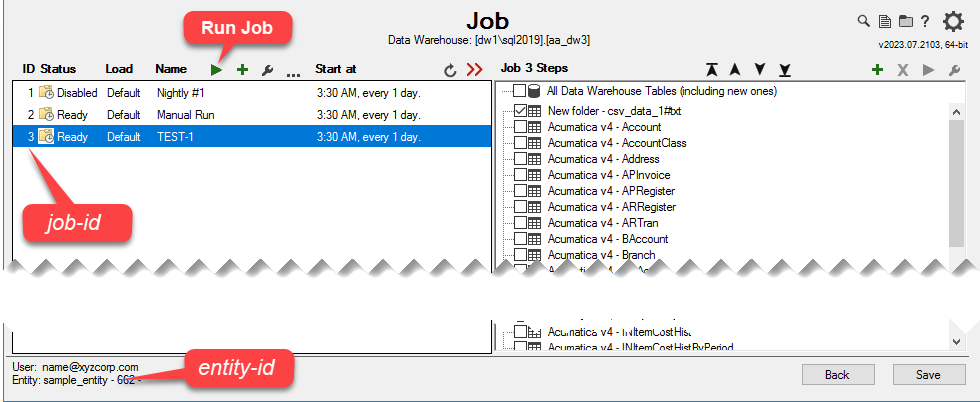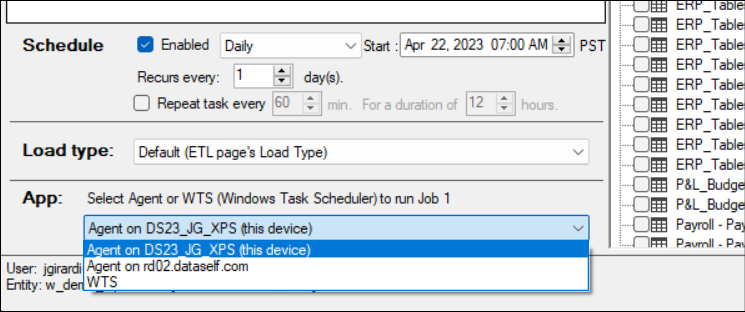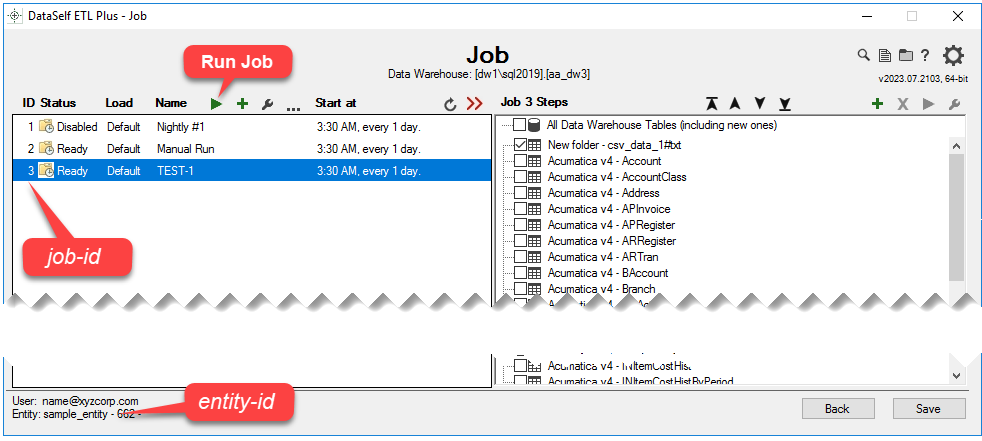ETL+ Command Line Interface
Windows command line (CMD/command/ (DOS) syntax for running processes defined on ETL+. These DataSelf ETL Plus.exe parameters run ETL+ jobs found on ETL+'s Job page.
The -ui load parameter is the same as selecting the -j <job-id> job on the Job page followed by Run Job.
Syntax for Windows Shortcuts and command line interface to ETL+
“<path>\DataSelf ETL Plus.exe” -e <entity> -j <job-id> [-ui load] [-ui log]
Parameters
<path>: Folder where ETL+ is installed. By default,
C:\Program Files\DataSelf ETL Plus\-e <entity>: The entity is the Entity value shown on the lower left-hand corner of most ETL+ pages. This parameter is always required to define which entity will be used by the command line.

-j <job-id>: This parameter will run the <job-id> (shown on the Job’s ID column - see the image below) from the -e <entity> as a Windows service on the local computer.
Example:
"DataSelf ETL Plus.exe" -e sample_entity -j 3.
-ui load: This parameter added to -j will run the Job via the Load UI (instead of running as a service). |
Running a command line with the -ui load parameter is the same as selecting the -j <job-id> on the Job page and then Run Job.

Example. The page below is displayed because of the -ui load parameter in the command line "DataSelf ETL Plus.exe" -e w_demo_erp -j 3 -ui load.

Page displayed because of the -ui load parameter.
-ui log: This parameter will run the ETL Log page from the -e <entity>.
The log shown is the same log as the log shown when clicking Log on the ETL or Job pages.E.g.: The following page is the result from:
"DataSelf ETL Plus.exe" -e w_demo_erp -ui log
The ETL Log page is displayed because of the
-ui logparameter.
Security
Access to source data. The WIndows user that ultimately executes the job (-j <job-id>) is determined by the App option of the Job Properties panel of the ETL+ Job Page. This Windows user must have access rights to the source data.

Log in Credentials. The command line interface does not require the credentials required by the ETL+ Sign in Page.
Screenshots

Job page. The job-id shown above corresponds to the -j <job-id> parameter.

Job List panel header of Job page
Related Pages
Job Properties panel
Syntax for Prior Versions of ETL+
https://dataself.atlassian.net/wiki/spaces/DS/pages/1985420133 Syntax from the prior version of ETL+.
v2023.07, v2023.10 ✅
Search: .bat file, batch, batch file, script, on demand, run, execute ETL+ job
